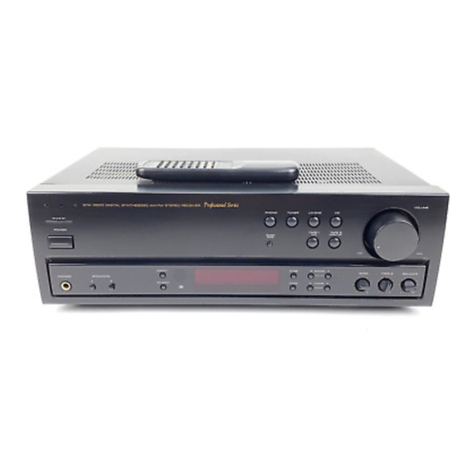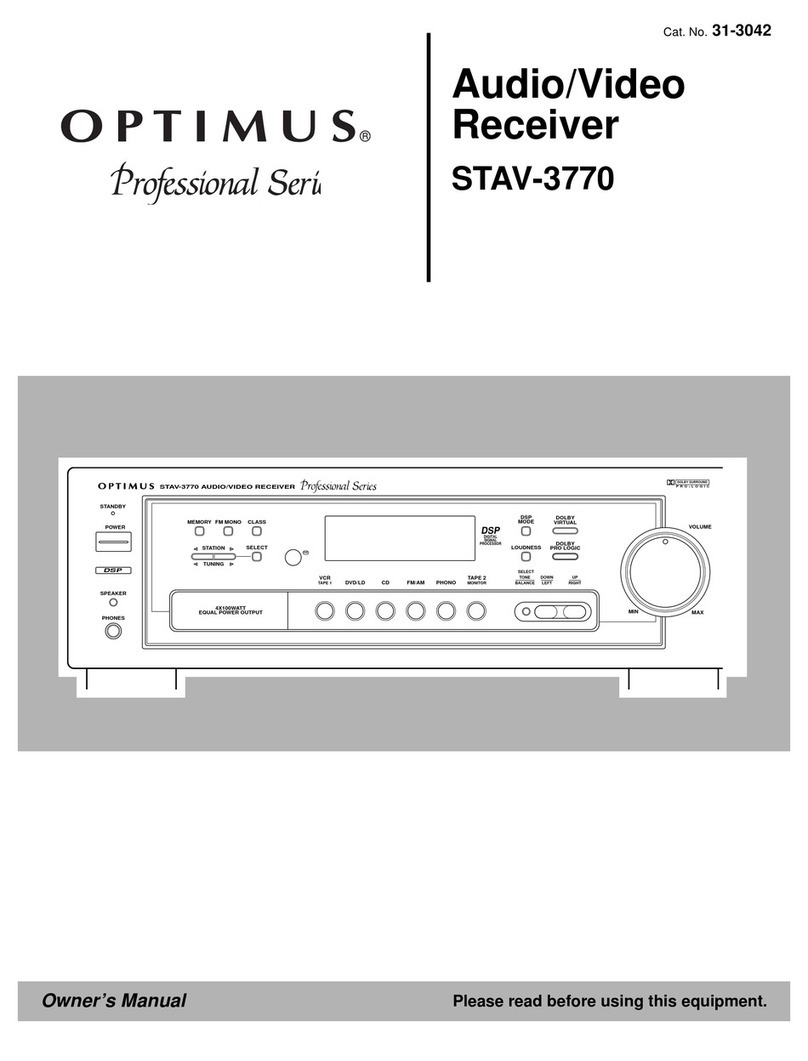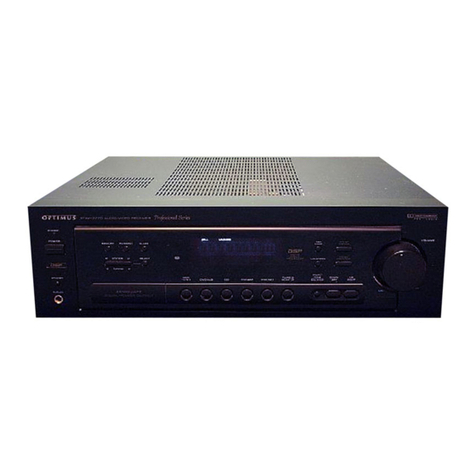
2
FEATURES
Your Optimus 2-Channel Profession-
al Wireless Audio Link System is de-
signed for use with public address
systems, musical instrument amplifi-
ers, headset microphones, or other
audio systems. The system’s long
range (150 feet), wide-range frequen-
cy response (100–12,000 Hz), good
signal-to-noise ratio (90 dB), and low
distortion (1.0%) let you use it any-
where you would use a conventional
microphone.
The transmitter’s innovative design
lets you link musical instruments,
headset microphones, or other audio
sources to a central mixer or amplifier
using state-of-the-art 170 MHz FM
wireless technology.
The transmitter’s low-battery indicator
and three-position switch help you
avoid last-minute battery failures.
The receiver has both microphone-
and line-level outputs for easy con-
nection to any amplifier, mixing board,
or recorder, and you can use both out-
puts at the same time. And, the receiv-
er’s volume control lets you easily
balance the receiver’s output with oth-
er sound sources.
Be sure to read this manual complete-
ly before you use the system.
Note: You need one 9-volt battery
(not supplied) to power the system.
Warnin
:To prevent fire or shock
hazard, do not expose this product
to rain or moisture.
This symbol is intended to alert you to
the presence of uninsulated danger-
ous voltage within the product’s enclo-
sure that might be of sufficient
magnitude to constitute a risk of elec-
tric shock. Do not open the product’s
case.
This symbol is intended to inform you
that important operating and mainte-
nance instructions are included in the
literature accompanying this product.
FCC NOTICE
This wireless audio link system com-
plies with Part 90 of
FCC Rules
. There
are two frequencies available for the
system. You must get a license for
each frequency you plan to use before
you use the system (one license can
include both frequencies). Licensabili-
ty depends on how you will use the
system.
Look in your local phone book for the
nearest FCC office and contact them
to get the necessary application.
RISK OF ELECTRIC SHOCK.
DO NOT OPEN.
CAUTION: TO REDUCE THE RISK OF
ELECTRIC SHOCK, DO NOT REMOVE
COVER OR BACK. NO USER-SERVICE-
ABLE PARTS INSIDE. REFER SERVIC-
ING TO QUALIFIED PERSONNEL.
!
!
© 1997 Tandy Corporation.
All Rights Reserved.
Optimus and RadioShack are registered trademarks used by Tandy Corporation.
32-1235.fm Page 2 Monday, August 9, 1999 3:32 PM









































